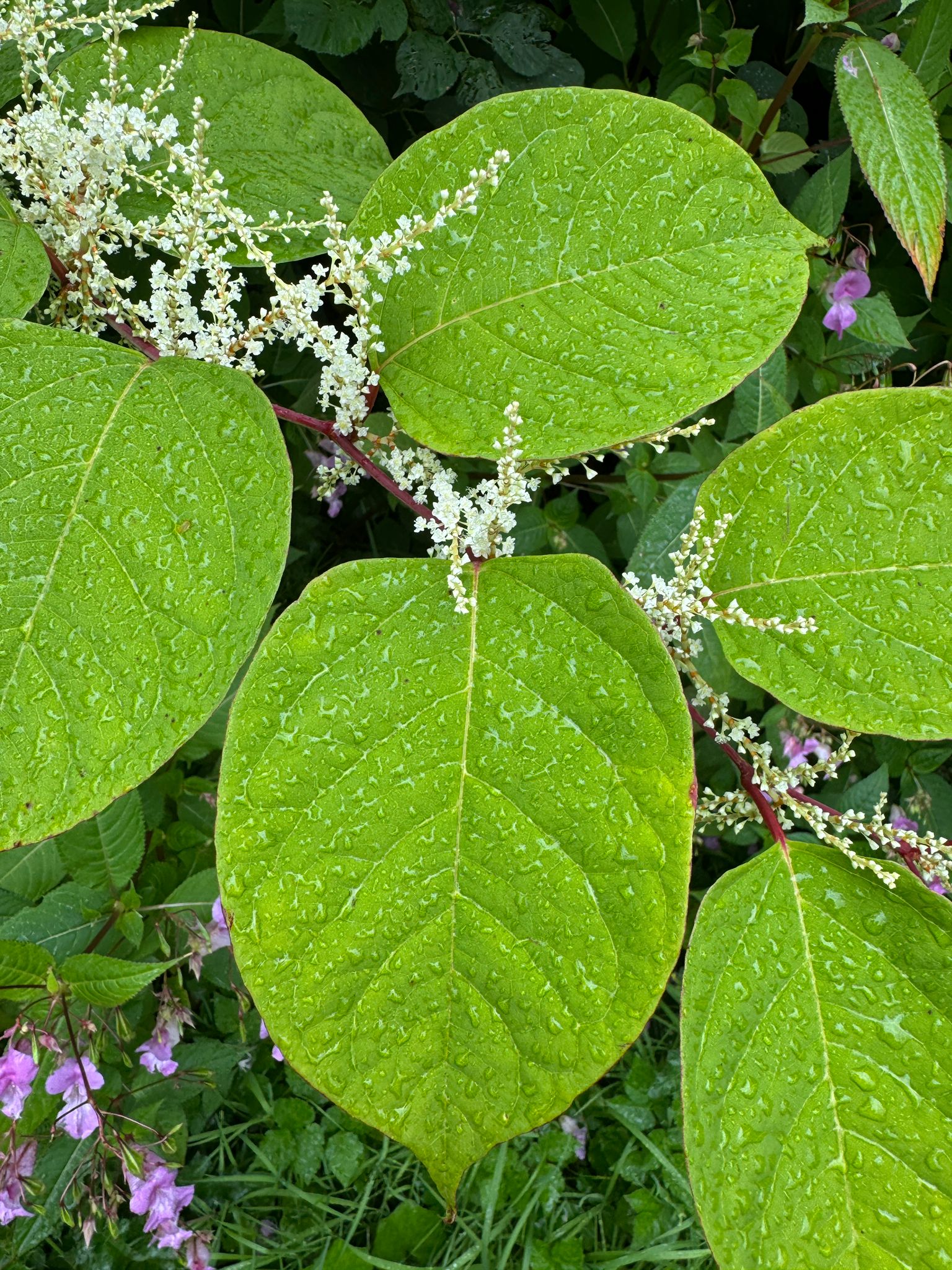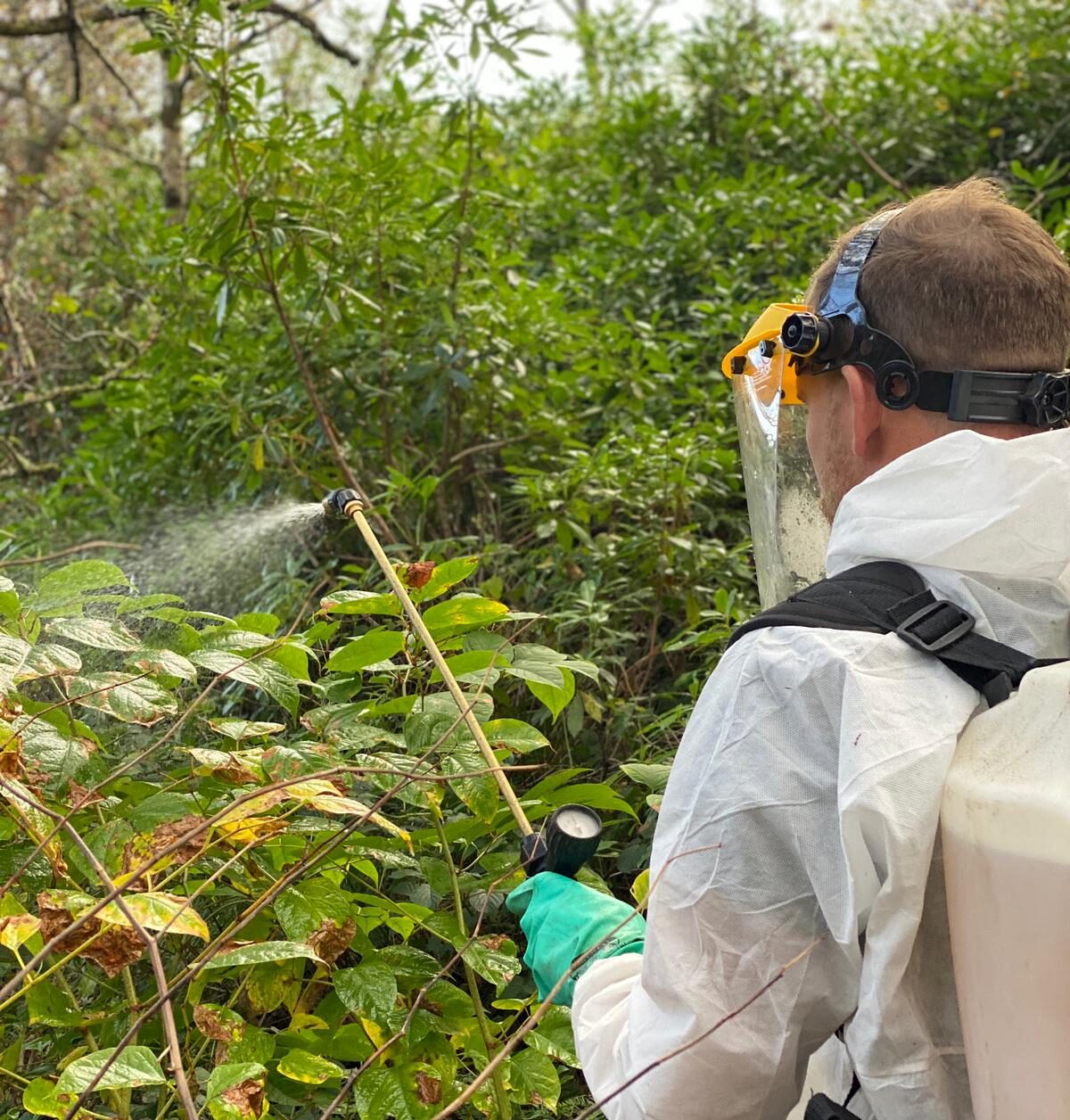Buddleia
Professional Buddleia removal across Scotland. JBB controls invasive plants on railways, riverbanks and buildings. Safe, effective treatment plans.
What is Buddleia?
Buddleia, also known as Buddleja davidii or the Butterfly Bush, is an ornamental plant originally introduced to the UK from China in the late 19th century. While attractive to pollinators like butterflies, this fast-growing shrub has become a problematic invasive species across Scotland.
Its ability to colonise disturbed ground, railway lines, urban areas and riverbanks makes it particularly disruptive to both natural habitats and built environments.
How Does Buddleia Spread?
Buddleia spreads rapidly through the wind dispersal of its numerous lightweight seeds. A single plant can produce thousands of seeds annually, which take root in cracks, walls, and bare ground with little effort. Once established, Buddleia can dominate an area, crowding out native species and causing long-term damage to ecosystems and structures alike.
Issues Caused by Buddleia
Is Buddleia Harmful?
Yes. Despite its visual appeal, Buddleia presents serious environmental and structural issues. Its roots are known for penetrating masonry, leading to damage in walls, pavements, and infrastructure—especially along railways and in urban settings. Ecologically, it outcompetes native flora, reducing biodiversity and altering habitats. Its uncontrolled growth can lead to costly maintenance, pose health and safety risks in public spaces, and delay construction or regeneration projects.
Identification of Buddleia Throughout the Year
Seasonal Growth Cycle
- Spring: Buddleia begins to regenerate with new leafy shoots and rapid stem growth.
- Summer: Flowering begins, producing long cone-shaped clusters of purple, pink, or white blooms that attract insects.
- Autumn: Seed production peaks, and the plant prepares for winter dormancy.
- Winter: Buddleia loses its leaves, but woody stems remain, often brittle and spreading aggressively.
Detailed Buddleia Plant Characteristics
- Stems: Upright, thick and woody with fine hairs. The hollow stems have a tendency to become brittle and snap.
- Leaves: Lance-shaped, grey-green, and arranged oppositely along the stems.
- Flowers: Fragrant, densely clustered, and cone-shaped, often purple but can also appear in pink, white, or yellow.
- Seeds: Extremely fine and lightweight, dispersed easily by wind.
- Roots: Shallow but aggressive, capable of establishing in poor, dry soil and exploiting structural weaknesses
What plants does Buddleia look similar to?
Buddleia is sometimes mistaken for lilac or other flowering shrubs due to its elongated flower clusters. However, unlike those plants, Buddleia tends to grow in unmanaged or disturbed areas and can reach great heights very quickly.
Are all Buddleia plants invasive?
Not all Buddleia cultivars are invasive, but Buddleja davidii, the most common variety found in the wild, is considered invasive in Scotland and the wider UK. Non-invasive or sterile varieties are available, but they still require responsible management to prevent uncontrolled spread.
Treatment and Control of Buddleia
How to Remove Buddleia Safely
Buddleia removal should be carried out with care, particularly when growing near buildings, transport infrastructure, or watercourses. At JBB Knotweed Solutions Ltd, we offer tailored management plans to safely and effectively control invasive Buddleia across Scotland. Our experienced team uses best-practice methods to ensure thorough removal with minimal disruption.
Our Treatment Methods
Herbicidal Treatment: Targeted application of approved herbicides can be effective, especially when timed correctly in the plant’s growth cycle. Multiple treatments may be required over several seasons for full eradication.
Mechanical/Manual Removal: In certain cases, cutting back or excavating the plant is necessary. Root systems must be thoroughly removed to prevent regrowth. All waste is handled responsibly and in accordance with environmental guidelines.
Book a Survey
Book a professional site survey with JBB Knotweed Solutions today to assess and manage Buddleia on your property.
More from JBB Knotweed Solutions



